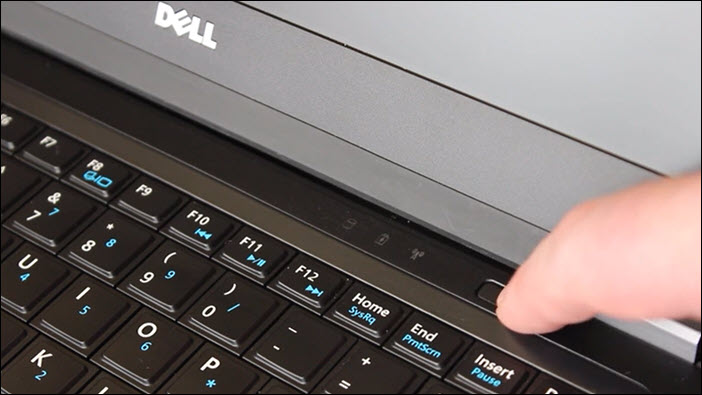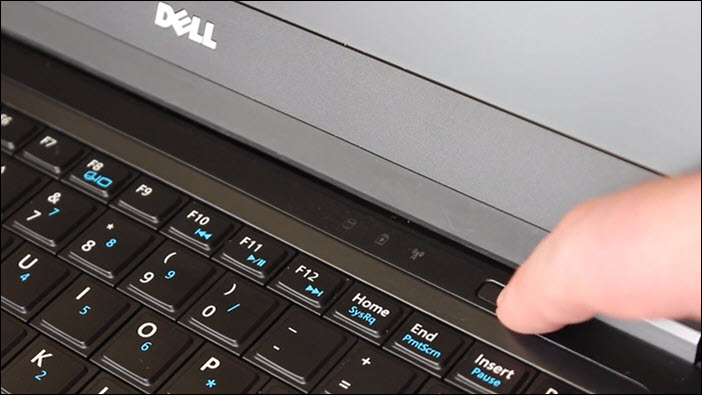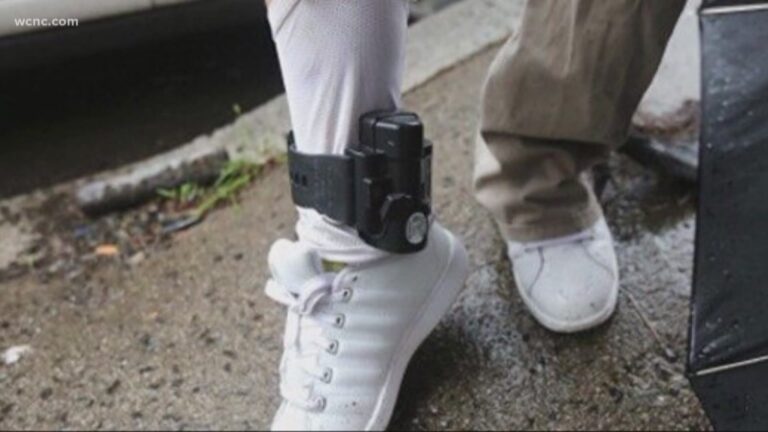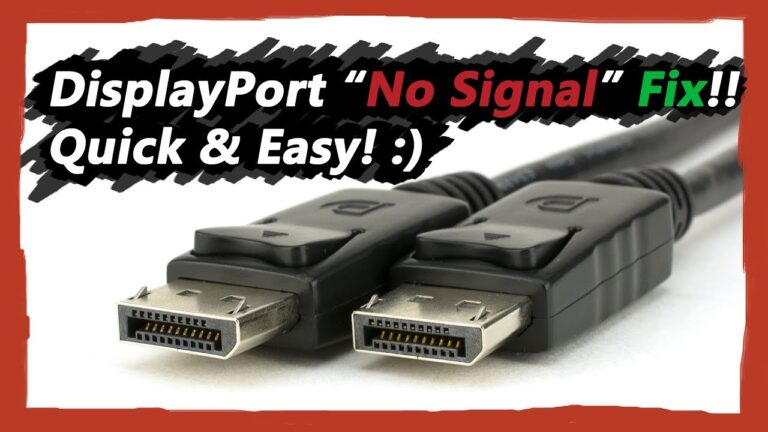Power Cable for Monitor Not Working: Troubleshooting and Fixes
If your power cable for your monitor is not working, you can troubleshoot the issue by checking for disconnected or loose connections. Verify that the power cable is securely plugged into the monitor and the power source.
Inspect for any damage or faults in the cable and consider replacing it if necessary. When dealing with a power cable issue for your monitor, it’s important to ensure that all connections are secure and functioning properly. Loose or disconnected cables can prevent the monitor from receiving power and cause it to not work.
By following some troubleshooting steps, you can identify and fix the problem with your power cable. This article will guide you on how to check for disconnected connections and address power cable issues for your monitor.
Signs Of Power Cable Malfunction
If your power cable for the monitor is not working, there are a few signs to look out for. Check if the cable is securely plugged in and there are no loose connections. Swap it with a known-good power cable if possible and ensure the power outlet is working properly.
Flickering Or No Screen Display
If your power cable for the monitor is malfunctioning, one of the signs you may encounter is flickering or no screen display. When your power cable is not providing a stable flow of electricity to your monitor, it can result in a flickering screen or no display at all. This can be frustrating, especially when you need your monitor to work properly for your daily tasks.
Cracking Noises Upon Plugging In
Another clear indication of a power cable malfunction is the presence of cracking noises upon plugging in. When you hear these noises, it means that there might be a loose connection or faulty cable. This issue can pose a potential risk as it can lead to electrical problems or even damage to your monitor.
Loose Connection Sensation
A prevalent symptom of a power cable malfunction is a loose connection sensation. When you plug the cable into your monitor and it doesn’t fit snuggly or feels loose, it signifies that there is an issue with the cable or the socket. This loose connection can lead to intermittent power supply, resulting in frequent interruptions in your monitor’s functionality.
It’s crucial to address these signs of power cable malfunction as soon as possible to avoid further complications. Check out our guide on how to check for disconnected monitor power cable connections to ensure that your power cable is securely plugged in and functioning properly.
Initial Power Connection Checks
When your power cable for the monitor is not working, the first step is to conduct initial power connection checks to identify and resolve the issue. These checks involve ensuring the cable and monitor port integrity, as well as examining power outlets and surge protectors.
Ensuring Cable And Monitor Port Integrity
The first thing you should do is examine the integrity of your power cable and the monitor port. Make sure the power cable is securely plugged into both the monitor and the power outlet. Sometimes, due to accidental tugging or movement, the cable might become loose, leading to power connection issues. Check for any visible signs of damage or wear on the cable and replace it if necessary. Additionally, inspect the monitor port for any debris or obstruction that may prevent a secure connection. If you notice any issues, clean the port gently using compressed air or a cotton swab.
Examining Power Outlets And Surge Protectors
Next, check the power outlet or surge protector that you are using to connect your monitor. Ensure that the outlet is providing power by plugging in another electrical device, such as a lamp or phone charger, and verifying if it works. Additionally, inspect the surge protector for any tripped circuit breakers or faulty switches. If either the power outlet or surge protector is not functioning correctly, try plugging the monitor directly into a different outlet without using the surge protector. This will help identify if the issue lies with the outlet or surge protector rather than the monitor or cable.
Advanced Cable Inspection And Testing
When your power cable for the monitor is not working, it can be frustrating to troubleshoot the issue. However, with advanced cable inspection and testing techniques, you can quickly identify and resolve the problem. In this section, we will discuss two crucial steps in the process: performing a physical examination for damages and testing the cable with another monitor.
Performing A Physical Examination For Damages
One of the first steps to take when your power cable for the monitor is not working is to perform a physical examination for any damages. Start by visually inspecting the cable for any visible signs of wear and tear. Look for frayed wires, kinks, or exposed connectors. These damages can prevent the cable from transmitting power effectively.
If you notice any damages, it is essential to replace the cable with a new one. Using a damaged cable can lead to poor power supply and potential shorts. However, if the cable appears to be in good condition, check the connectors at both ends. Make sure they are clean and securely attached to their respective ports. Sometimes, loose or dirty connectors can cause power connectivity issues.
Testing The Cable With Another Monitor
If you have examined the power cable and found no visible damages, the next step is to test it with another monitor. This will help determine if the problem lies with the cable or the monitor itself. Find another monitor with a compatible power cable and connect your cable to it. Ensure that all connections are secure.
If the second monitor powers up successfully, it indicates that the cable is functioning correctly, and the issue lies with your original monitor. In this case, you may need to seek further assistance or consider repairing or replacing the monitor.
On the other hand, if the second monitor also does not receive power, it suggests that the cable is the problem. In such cases, replacing the cable with a new one should solve the issue. It is crucial to use a high-quality and compatible power cable to ensure a proper power supply to your monitor.
Performing a physical examination for damages and testing the cable with another monitor are critical steps in advanced cable inspection and testing. By following these steps, you can quickly identify the root cause of the power cable issue and take appropriate actions to resolve it.
Power Cable And Socket Compatibility Assessment
If the power cable for your monitor is not working, there are a few steps you can take to assess the compatibility and resolve the issue. Start by checking the power cable connections behind the monitor and ensure they are securely plugged in.
You can also verify that the power strip or surge protector is securely connected. If the cable feels loose, it could be a faulty cable or socket, and you may need to replace or fix it accordingly.
Power Cable and Socket Compatibility Assessment When it comes to troubleshooting a monitor that is not working, one of the first things to check is the power cable and socket. In this section, we will discuss the importance of power cable compatibility and how to assess it effectively.Comparing With Original Specifications
To ensure the power cable and socket compatibility, it is crucial to compare them with the original specifications provided by the manufacturer. Each monitor comes with a specific power cable that is designed to deliver the correct voltage and amperage required for optimal performance. When inspecting the power cable, check for any visible damage such as fraying or exposed wires. If the cable appears damaged, it is recommended to replace it with a compatible one. Additionally, examine the power socket on the monitor. Ensure that it is not loose or damaged, as a loose socket can cause intermittent power issues. If the socket appears faulty, contact the manufacturer for assistance or consider seeking professional help.Identifying Potential Mismatches
It is essential to identify any potential mismatches between the power cable and the monitor’s socket. Using an incompatible power cable can lead to insufficient power supply or even damage to the monitor. To identify potential mismatches, consider the following factors: 1. Connector type: Check if the connector type on the power cable matches the socket on the monitor. Common connector types include IEC, C13, and C14. 2. Voltage rating: Verify that the voltage rating of the power cable matches the input voltage requirements of the monitor. Using a power cable with a lower voltage rating may not provide enough power, while a higher voltage rating can damage the monitor. 3. Amperage rating: Similarly, ensure that the amperage rating of the power cable is compatible with the monitor’s requirements. Using a power cable with insufficient amperage may result in power instability. By carefully comparing the power cable and socket specifications, you can ensure a proper match and avoid potential issues with your monitor’s power supply. In conclusion, assessing power cable and socket compatibility is crucial when troubleshooting a monitor that is not working. By comparing the power cable with the original specifications and identifying potential mismatches, you can determine if a faulty cable or socket is causing the problem. Remember to always prioritize safety and consult professional assistance if needed. Note: Make sure to insert all the content in HTML format suitable for WordPress.Internal Monitor Component Examination
When it comes to troubleshooting a power cable issue with your monitor, it’s essential to conduct an internal examination of the monitor components. This will help you identify any underlying issues and ensure that your monitor is working optimally. In this section, we will guide you through the process of opening the monitor casing cautiously and locating and appraising capacitor health.
Opening The Monitor Casing Cautiously
In order to access the internal components of your monitor, you need to open the casing cautiously. Follow these steps:
- Disconnect the monitor from the power source.
- Place the monitor on a clean, flat surface.
- Locate the screws holding the casing together.
- Use a screwdriver to remove the screws carefully.
- Gently pry open the casing without applying excessive force.
Once you have successfully opened the monitor casing, you can proceed to the next step of examining the internal components.
Locating And Appraising Capacitor Health
Capacitors are a common source of power issues in monitors. By inspecting the capacitors, you can determine whether they are functioning properly. Follow these steps:
- Locate the capacitors on the monitor’s circuit board.
- Visually inspect each capacitor for any signs of bulging, leaking, or other physical damage.
- If you notice any damaged capacitors, they will need to be replaced.
- Refer to your monitor’s model number to find the appropriate replacement capacitors.
- Remove the faulty capacitors using a soldering iron and desoldering pump.
- Install the new capacitors in the correct orientation and solder them into place.
By checking and replacing faulty capacitors, you can resolve power issues caused by internal component failures in your monitor.
In conclusion, conducting an internal examination of your monitor components is crucial when troubleshooting a power cable issue. By cautiously opening the monitor casing and inspecting the capacitors, you can identify and resolve any internal component problems effectively. Following these steps can help you ensure that your monitor is working properly and the power cable is correctly connected.
Practical Power Cable Resolution Methods
If your power cable for the monitor is not working, there are several practical resolution methods you can try. Check if the power cable is securely plugged in, verify the power strip or surge protector connection, and make sure there is no debris or loose electrical connection.
You can also swap with a known-good power cable or refer to the monitor’s user guide for further troubleshooting.
hat it is working properly. If the power outlet is functioning correctly, the issue may lie with the power cable of your monitor. In this section, we will explore practical power cable resolution methods that can help you address the problem effectively.Tightening Or Replacing Loose Connections
Loose connections can often be the culprit behind a non-working power cable. To resolve this issue, follow these steps: 1. Inspect the connections: Start by examining the connection points of the power cable. Look for any signs of damage, wear, or loose connectors. 2. Tighten the connections: If the connectors are loose, gently push them in and ensure a secure connection. You can also try tightening the screws, if applicable. 3. Replace damaged connectors: If you notice any damaged connectors, it is advisable to replace them. You can find compatible replacement connectors at your local electronics store or online. 4. Use cable clips or ties: To prevent future connection issues, consider using cable clips or ties to secure the power cable in place. This will help minimize any strain on the connectors.Selecting The Right Replacement Power Cable
If tightening the connections doesn’t solve the problem, you may need to replace the power cable altogether. Here are some tips to guide you through the process: 1. Identify the correct cable type: Different monitors may require different types of power cables. Check your monitor’s specifications or user manual to determine the specific type of power cable you need. 2. Measure the cable length: Take measurements of your current power cable to ensure you select a replacement with the appropriate length. It’s important to have enough reach to comfortably connect your monitor to a power outlet. 3. Check the connector type: Pay attention to the connector type required for your monitor. Common connector types include IEC, C5, and C13. Make sure the replacement cable you choose has the compatible connector. 4. Look for quality and durability: Opt for a power cable that is made from high-quality materials and designed to handle the power requirements of your monitor. A durable cable will ensure a reliable and long-lasting connection. Remember, it’s always best to consult the manufacturer’s recommendations and guidelines when selecting a replacement power cable. By following these practical power cable resolution methods, you can troubleshoot and resolve issues with your monitor’s power cable effectively.Prolonging Monitor Power Cable Life
If your power cable for the monitor is not working, there are a few things you can try. First, check the connections and ensure that the cable is securely plugged in. If it’s loose, you can try inserting some paper alongside the cable to make it fit snugly.
If these steps don’t resolve the issue, consider replacing the power cable to get your monitor up and running again.
Encouraging Proper Cable Management
Proper cable management plays a crucial role in prolonging the life of your monitor power cable. Keeping the cable neatly organized and secure not only reduces the risk of accidental damage but also ensures efficient power transmission. Follow these tips to encourage proper cable management:
- Use cable ties or Velcro straps to bundle the power cable with other cables, preventing tangling and potential strain.
- Avoid tightly bending or twisting the cable, as it can lead to internal wire damage.
- Do not place heavy objects on top of the cable or allow it to get trapped under furniture.
- Keep the cable away from sharp edges or areas with excessive heat.
- Consider using cable management solutions such as cable clips or cable sleeves to keep the cable organized and out of the way.
Suggesting Regular Check-up Routines
To ensure the longevity of your monitor power cable, integrating regular check-up routines is essential. By periodically inspecting the cable’s condition, you can detect early signs of wear and tear or potential issues. Follow these suggested check-up routines:
- Visually inspect the cable for frayed or exposed wires, loose connections, or signs of physical damage. If any issues are found, consider replacing the cable.
- Check the cable connections at both ends to ensure they are securely plugged in. A loose connection can lead to power interruptions or complete cable failure.
- Verify the power strip or surge protector connection if you are using one. Ensure it is firmly plugged in and functioning correctly.
- Consider testing the power outlet with another electrical device to ensure there is power available.
- Regularly clean the connectors using a soft cloth to remove dust or debris that may affect the power transmission.
By encouraging proper cable management and implementing regular check-up routines, you can extend the life of your monitor power cable, minimize the risk of power interruptions, and ensure optimal performance for your monitor.
Frequently Asked Questions On Power Cable For Monitor Not Working
How Do I Fix My Monitor Not Getting Power?
To fix a monitor not getting power: 1. Check the power cable connection behind the monitor. 2. Make sure the power cable is securely plugged in. 3. Verify that the power strip or surge protector is securely connected. 4. If the cable is loose, try inserting a small piece of paper alongside it.
5. If the issue persists, consider replacing the monitor’s power cable.
Can I Change Monitor Power Cable?
Yes, you can change the monitor power cable. It is recommended to check if the power cable is securely plugged in. If the cable is loose or not working, you can replace it with a new one. Bad power cables can cause power issues in monitors.
Can You Turn On A Monitor Without A Power Cord?
No, a monitor cannot be turned on without a power cord. The power cord is necessary for supplying the required electrical power to the monitor.
Is My Monitor Or Cable Broken?
If your monitor screen goes kaleidoscopic, it’s likely a broken cable. Additionally, pressing gently along the edges of the screen can help determine if there are any loose connections.
Conclusion
If you’re experiencing issues with your power cable for your monitor, there are a few troubleshooting steps you can take. Firstly, make sure the power cable is securely plugged into both the monitor and the power source. If the cable is loose, try using a different cable or securing it with a piece of paper or something similar.
If you’ve ruled out the cable as the problem, it may be a faulty socket or a more complex issue. In these cases, it may be necessary to consult a professional for further assistance. Remember to always exercise caution when dealing with electrical components.



